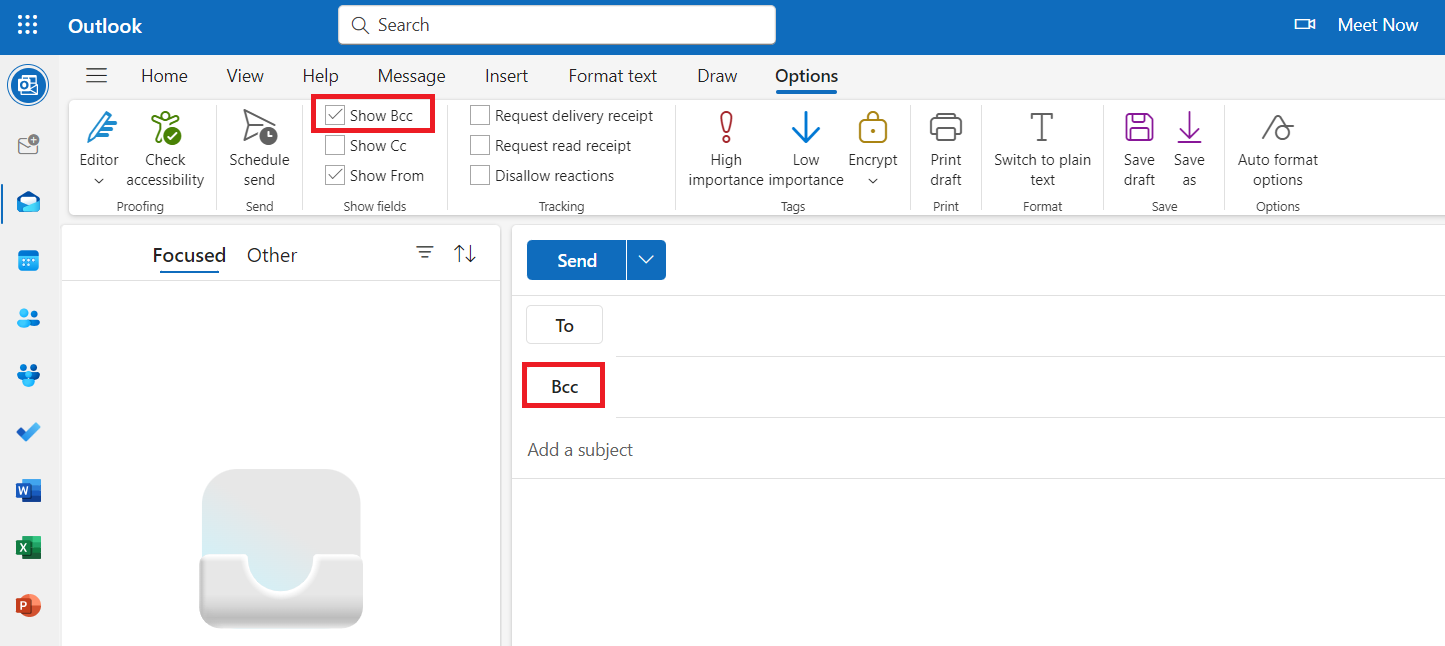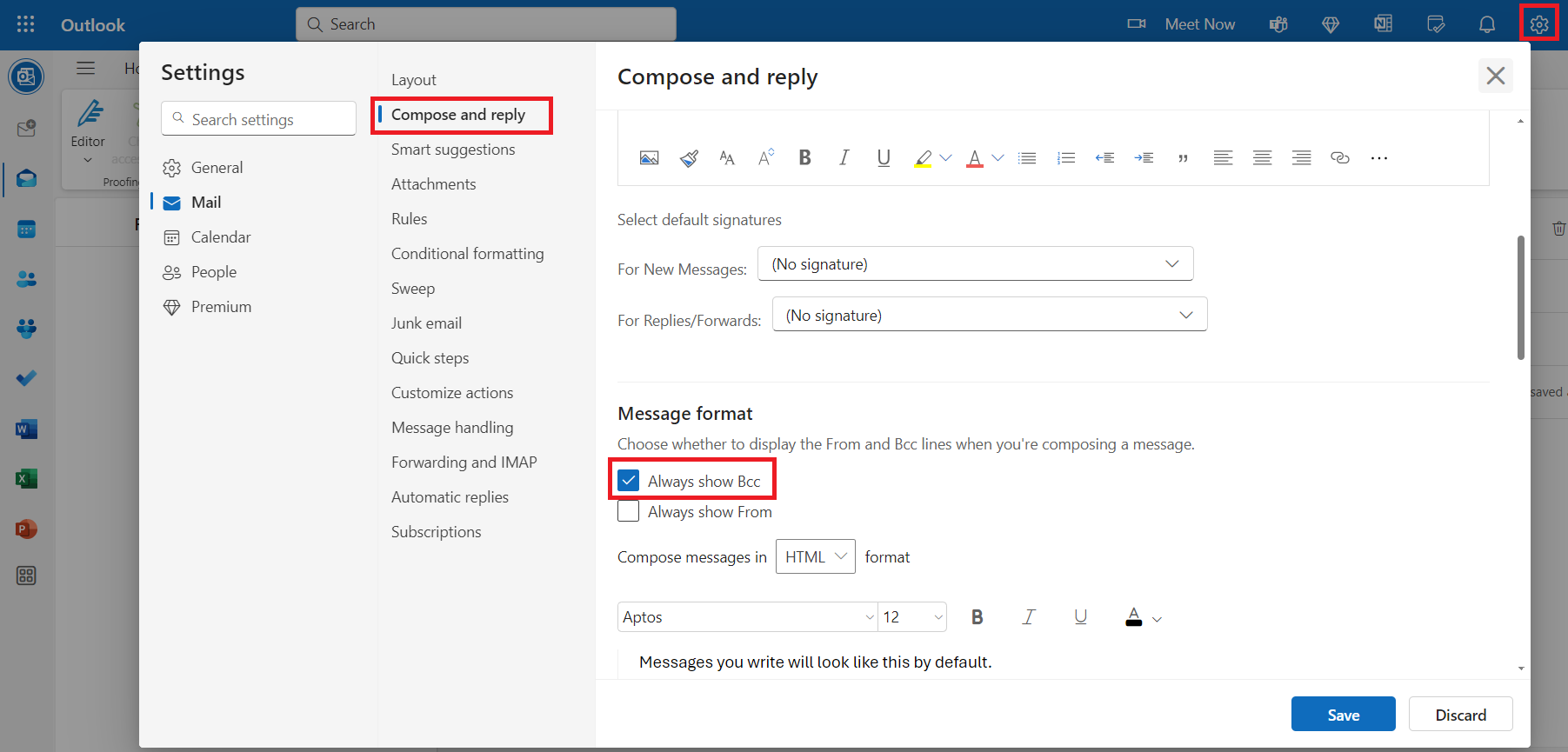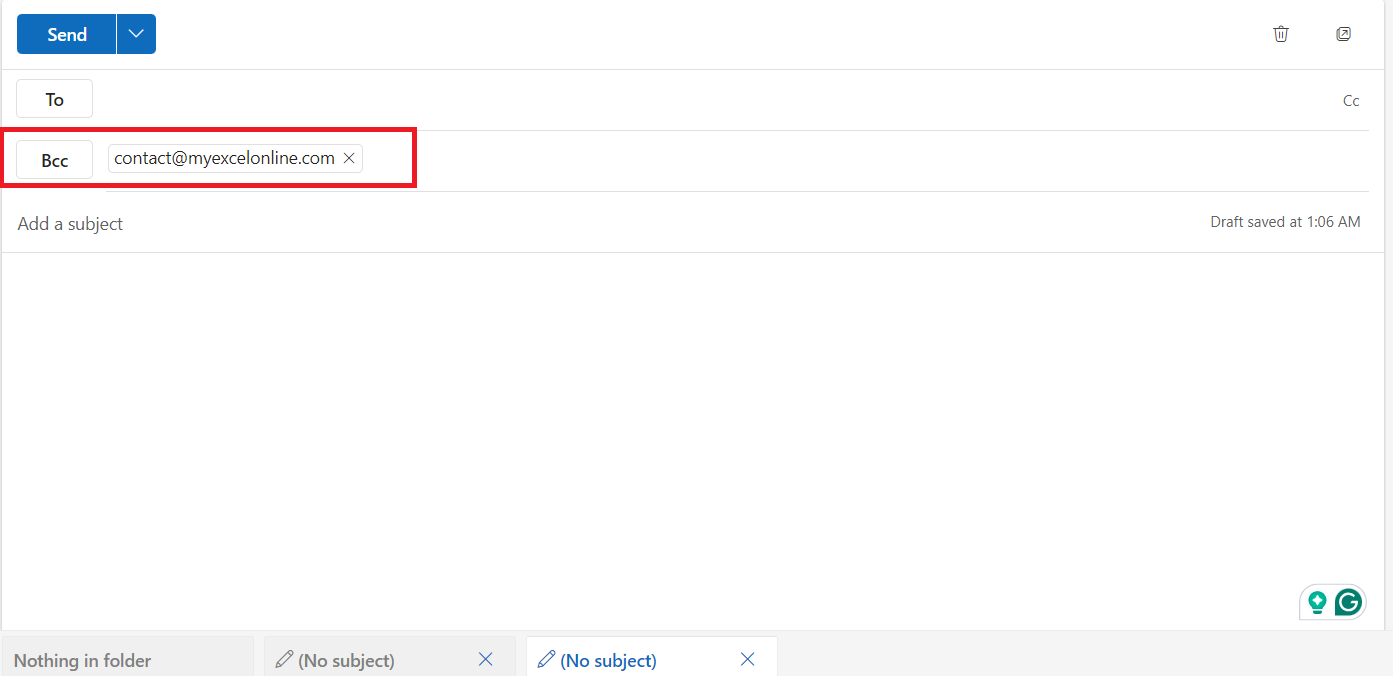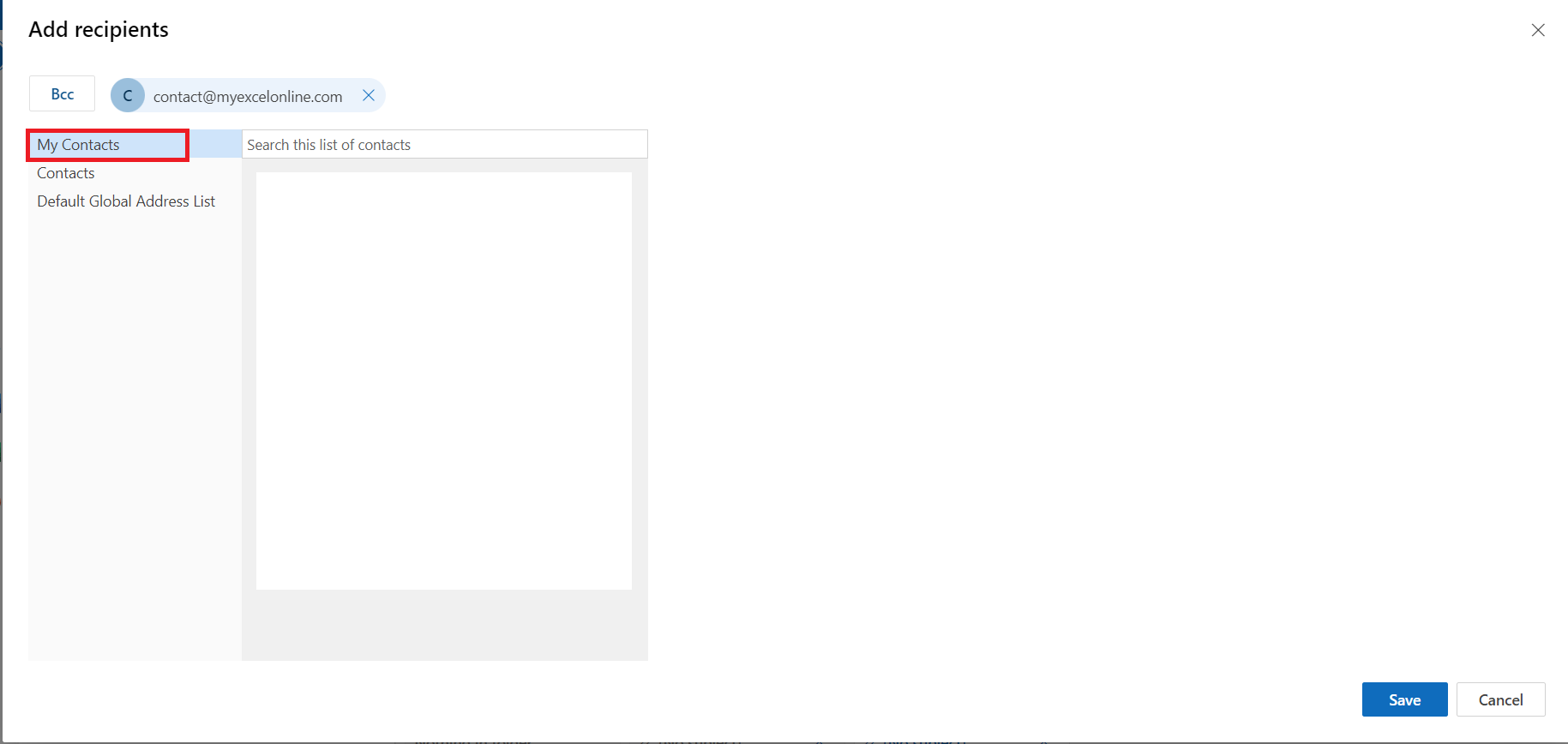I remember the first time I needed to send an email to multiple recipients without everyone seeing each other’s email addresses. It seemed straightforward, but I wasn’t familiar with using the “BCC” (Blind Carbon Copy) feature in Microsoft Outlook. If you’re anything like me, it’s essential to get the basics right. In this article, I’ll guide you through everything you need to know about how to BCC in Outlook.
Key Takeaways:
- BCC ensures email privacy by hiding recipients’ email addresses from one another, crucial for large group emails or business communications.
- BCC helps prevent reply-all mishaps, reducing unnecessary clutter in inboxes from mass responses, especially in large group communications.
- BCC is a great tool for confidentiality, particularly when sending sensitive information to multiple parties who don’t need to know each other’s involvement.
- Avoid overusing BCC, as it can create a sense of secrecy or lack of transparency in professional settings.
- Troubleshoot BCC issues by checking sent emails, and ensuring that BCC recipients are properly recorded in the “Sent Items” folder for future reference.
Table of Contents
Navigating the Basics of BCC in Outlook
Understanding the Role and Benefits of Using BCC
In the context of email communication, using BCC, which stands for Blind Carbon Copy, ensures that we maintain the privacy of recipients’ email addresses. The benefits are manifold; it protects the privacy of those in the original message since their addresses are hidden from other recipients.
Additionally, it provides a safeguard against forwarding mistakes and Reply-All storms that could otherwise lead to a deluge of unnecessary emails.
Plus, it’s an effective anti-spam tactic, lessening the chances that recipients will be targeted by unsolicited spam or viruses from other users’ compromised systems.
The Difference Between CC and BCC in Email Communication
When it comes to CC (Carbon Copy) versus BCC (Blind Carbon Copy), the primary difference lies in visibility. Whenever we send an email and populate the CC field, each recipient sees the full list of others who received the same email. It’s a transparent approach that is handy when all participants in the correspondence are privy to who else is involved.
On the other hand, BCC is like the stealth mode of email features – it conceals the list of BCC-ed recipients from everyone. I especially rely on BCC when I am emailing groups where privacy is a concern or when individual contacts don’t need to know about each other’s involvement.
Getting Started with BCC in Outlook
Enabling the BCC Field in Your Outlook Interface
Getting the BCC field to show up in Outlook is a simple step that can make a big difference in how we manage email privacy. For those of us not seeing the BCC field by default, here’s a quick fix:
STEP 1: Start by opening a new email message in Outlook.
STEP 2: Once the new email window is open, you’ll see several tabs at the top of the screen. Click on the “Options” tab.
STEP 3: In the “Show Fields” section, you’ll see a button labeled “BCC.” Click it, and voilà! The BCC field will now be visible in your email window.
Now, if we want to avoid having to do this every time, it’s possible to make the BCC field a permanent fixture in Outlook 365. After signing into Outlook on the web, we can click the gear icon for settings, and within the Mail settings, under ‘Compose and Reply’, we’ll find an option to ‘Always show Bcc.’
Just a quick save and it’s set to show for all future emails. Simple and efficient.
How to BCC in Outlook
Adding recipients to the BCC field when crafting a new email in Outlook is straightforward. Once the BCC field is enabled and visible, we simply click inside it and begin typing the email addresses of those we intend to blind carbon copy.
We can also select contacts from our address book by clicking ‘BCC’ to open our contacts list and ticking off the names we want to include.
They’re then added to the BCC field without any fuss. This ensures that we can compose our message normally while keeping select recipients’ addresses hidden from others.
It’s essential to remember that adding individuals to the BCC field means they will receive our email without any visibility on who the other recipients are, fostering an environment of discretion, particularly useful in professional settings or when dealing with a large number of contacts.
Tips & Tricks for BCC in Professional Communication
When and Why to Use BCC in Business Emails
In business emails, BCC is a tool I encourage us to use wisely. It’s particularly important for protecting privacy and managing communication more strategically. Here are scenarios when BCC is typically appropriate:
- Sending sensitive information to multiple parties: When sharing confidential or sensitive updates where recipients don’t need to know who else is involved, BCC can keep email addresses private.
- Mass emails or newsletters: To avoid disclosing subscriber lists and potentially violating privacy regulations, BCC hides recipient information from each other.
- Preventing Reply All chains: For large group communications, BCC’ing parties prevent the dreaded ‘Reply All’ catastrophe where everyone’s inboxes get overloaded with responses.
And regarding why to use BCC: it upholds a professional standard by preventing data breaches and safeguarding against accidental privacy invasions. In essence, it’s about respect — keeping individual information confidential and communication clear without unnecessary clutter.
Potential Pitfalls of Overusing BCC and How to Avoid Them
While BCC is undoubtedly a powerful feature for ensuring privacy, overusing it can lead to some pitfalls. Overreliance on BCC can sometimes give the impression of secrecy or a lack of transparency in communication, which doesn’t bode well in certain professional settings.
Another risk is the accidental ‘Reply All’ scenario, where a BCC’d recipient might reply to everyone, unaware they were hidden, and inadvertently expose the BCC list or simply create confusion.
To avoid these missteps, I suggest we use BCC judiciously. BCC should be reserved for instances where privacy is paramount, such as sending sensitive company announcements or client information. Another practice is to be clear with primary recipients about the presence of BCC’d individuals, whenever appropriate, to prevent misdirected replies.
Furthermore, establishing and adhering to clear email communication guidelines within an organization can stave off potential BCC misuse. Ensuring that all team members understand when and why to use the BCC function can greatly diminish the risk of its overuse.
Outlook’s BCC Limitations
There are a few things to keep in mind when using BCC in Outlook:
- Recipient Limits: Outlook limits the number of people you can send a message to at once. This helps prevent spam and ensures emails are delivered successfully. The limits vary depending on your organization or email service provider.
- Delivery Issues: Sometimes, emails sent with a large number of BCC recipients might land in spam or junk folders. To avoid this, I usually keep my BCC lists reasonable in size.
Frequently Asked Questions
How do I use BCC in Outlook?
To use BCC in Outlook, compose a new email and then enable the BCC field by clicking on ‘Bcc’ in the message composition window, next to the ‘To’ and ‘Cc’ fields. Simply type or select the recipients’ email addresses that you want to add to the BCC field. Fill in the subject and body of the email as usual, and once you’re ready, click send. The recipients in the BCC field will receive the email without their information being disclosed to others.
Can BCC Recipients See Other BCC-Ed Individuals?
No, BCC recipients cannot see other BCC-ed individuals in an email. The BCC field is designed to keep those addresses invisible to each recipient included in it, ensuring privacy for each of them. The only person aware of all BCC recipients is the individual who sent the email.
What Happens if Someone Accidentally Replies All to a BCC Email?
If someone accidentally uses ‘Reply All’ on a BCC email, the BCC’d recipients will not be alerted. Only the original sender and anyone listed in the ‘To’ or ‘CC’ fields will receive the response. The privacy of BCC’d recipients is maintained, and they remain undisclosed.
How do I send a mass email and hide recipients in Outlook?
To send a mass email and hide recipients in Outlook, use the BCC feature. Open a new email, enable the BCC field, and enter all the recipient addresses there. This will obscure each recipient’s email address from others in the BCC list and protect their privacy. Compose your message and send it once you’re done.
Why use bcc in Outlook?
Using BCC in Outlook is vital for privacy. It helps to keep recipient email addresses confidential, reduce the risk of ‘Reply All’ mishaps, and streamline email appearance. Trust with customers or contacts is built by safeguarding their information, contributing to professional and respectful email practices.
John Michaloudis is a former accountant and finance analyst at General Electric, a Microsoft MVP since 2020, an Amazon #1 bestselling author of 4 Microsoft Excel books and teacher of Microsoft Excel & Office over at his flagship MyExcelOnline Academy Online Course.













